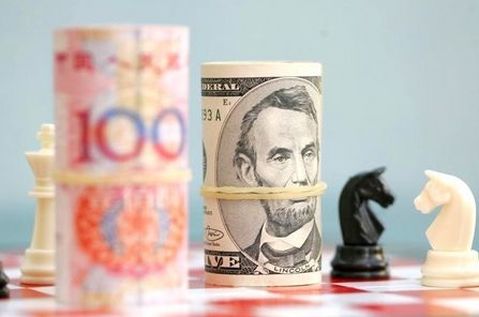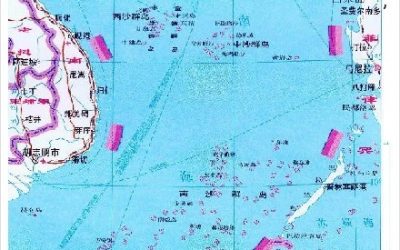Some neo-liberals and Western media have argued against China’s use of capital controls on the grounds it slows down ‘internationalisation of the RMB’ [China’s currency] and instead have argued for liberalisation of China’s capital account or even for abolition of exchange controls. Leading Chinese economist, notably Yu Yongding, have strongly argued against argued for the maintenance of capital controls and their position has prevailed. This was one of the most important recent economic debates in China.
Abolition of capital controls has brought disastrous consequences in developing countries – in particular in the South East Asian debt crisis of 1997-98 and in the looting of Russia by oligarchs after 1991. This article deals with the errors of the argument in favour of abolishing capital controls from the point of view of monetary theory.
RMB ‘internationalization’ is one of the most discussed issues in China’s economic policy. But many claims regarding the extent of RMB internationalization are greatly exaggerated and the practical proposal to attempt to achieve it, capital account convertibility of the RMB, is extremely dangerous for China’s economic and social stability. To eliminate false estimates and policies, it is, therefore, necessary first to accurately establish the facts regarding the real international role of the RMB and then analyze what consequences flow from these.
Those wishing to present a highly exaggerated picture of the degree of RMB internationalization frequently do this by presenting percentage growth figures. This gives a misleading impression because it fails to mention that such growth rates look impressive merely because they are calculated starting from extraordinarily low levels. To take a typical example, the proportion of RMB payments carried out in the US in April 2014 had risen by 100% compared to a year earlier. This sounds spectacular – until it is noted that the rise was only to 0.04% of all worldwide currency transactions!
A sense of reality is immediately injected it if its noted that even when a big push was being made for RMB internationalization, in part to help secure the RMB’s inclusion in the IMF’s SDR basket, in April 2014 the RMB accounted for only 1.4% of international payments – globally, RMB payments were entirely marginal. Furthermore even this very low figure exaggerated the RMB’s internationalization because a large percentage of the payments are merely between mainland China and Hong Kong.
On the latest data, in late 2014, the renminbi became one of the five most-used currencies for global payments – but its total share was still under 2.2% of all payments. By June 2017 the renminbi accounted for 2% of interntional payments, lower than the Canadian dollar.
To illustrate the real situation, start with China’s strongest area internationally – trade. By the end of 2013, 8.7% of world trade was denominated in RMB – but the dollar’s share was almost 10 times as high at 81%. Furthermore, the RMB figure was artificially flattering as around 80% of RMB payments were for Hong Kong. Excluding Hong Kong RMB payments were marginal. For example, by April 2014 only 2.4% of China and Hong Kong’s trade with the US, China’s largest single country export market, was in RMB.
The same situation exists with international bond markets. The European Central Bank states that by mid-2013 a miniscule 0.3% of international bonds were in RMB, of which 75% were by China and Hong Kong companies – meaning issuance of RMB bonds by other countries was under 0.1% of the global total.
Regarding world foreign exchange reserves, at the beginning of 2014, 60% were held in dollars and 25% in Euros. The percentage in RMB was 0.01% – which is too small even to be considered marginal.
These numbers are so low that there is certainly room for huge percentage increases, yielding profitable business for individual financial institutions, without altering the reality that the RMB remains entirely peripheral in the global financial system.
But beyond the extremely low numbers, there are even more fundamental structural reasons why the RMB will not play a central role in global finance in any near time frame, and why the dollar will retain its dominance for a prolonged period.
There have been only two international currency systems in the last 300 years. In 1717 Isaac Newton linked the pound to gold, thereby establishing the gold standard. This gold standard system lasted for 200 years – its collapse can be dated either to 1914, when it was temporarily suspended, or to 1931, when the pound formally broke its previous parity with gold. The second system, a de facto dollar standard, has lasted for almost seven decades since 1945. The interregnum between the two systems, 1931-45, accompanied the most catastrophic crisis in international economic history.
It is immediately striking from this how long is the lag between the economic rise and fall of domestic economies and changes in monetary dominance. The UK fell behind US as the world’s largest market economy in the early 1870s, but Britain maintained international monetary dominance for almost half a century. There was a seventy year lag between the US becoming the world’s largest economy and the dollar becoming the dominant international currency.
This great ‘rigidity’ in international payments structures flows from the fundamental nature of a market system itself. A functioning efficient market can only operate if there is a single measure of prices – if there were different price standards in different parts of the market uncontrollable arbitrage and/or fragmentation would destroy that market. Gold therefore provided a single measure for international markets, then the dollar did. The only period in which there was no single measure, 1931-45, could only exist because the world economy was disastrously fragmented – and the accompanying effects of that, the Great Depression and World War II, were catastrophic.
It is this fact that a market, including the global market, can only function properly if there is a single price unit that explains the key features of the history of the international monetary system – and will therefore dictate its necessary future development. It is why there were only two global price standards, gold and the dollar, over a three hundred year period; that there was no period, except in the chaos of the 1930 and World War II, when there was a mix of dominant currencies; and that the transition between the gold standard and the dollar standard did not take place gradually but abruptly and in a short period. These were all features which expressed the necessary dominance of a single price standard within a market.
A further necessary consequence of a single price standard is that, in order to allow its practical functioning, substantial international holdings of whatever is the price unit must be held – large gold holding under the gold standard, and large dollar holdings under the dollar standard. The scale of these reserves then itself becomes a powerful factor in maintaining the dominance of that monetary unit.
To guard against risk flowing from such large holdings, this international reserve unit must itself have great intrinsic power. In the case of gold this was ensured by the very high costs of gold production, which ensured it remained scarce and had a very high value in exchanges with other commodities. In the case of the dollar, it was the fact that that the entire world wished to purchase the products of the US economy, which could be bought with dollars – the historical guarantee of the dollar was the production of Exxon, Ford, Chevron, General Motors, Caterpillar etc. The strength of the dollar was not based on “paper” but on the US production that could be purchased with it.
For this reason a monetary unit which is not backed by great intrinsic economic value cannot function as the core of an international payments system. The Special Drawing Rights (SDRs) of the IMF, or the ‘paper gold’ proposed by Justin Yifu Lin, have no intrinsic economic value but rely on agreements between countries – Justin Yifu Lin for example proposes “countries would ag
ree that p-gold could be used to settle all international transactions for goods and services, commodities and securities.” But unfortunately history shows clearly that agreements between countries can be, and frequently are, broken.
No reserve currency unit could therefore be based on something so insubstantial as an agreement. The RMB, certainly, is backed in the final analysis by China’s economic productive power and international desire to purchase China’s products – something very real. But China’s GDP at market prices, the only measure that counts for monetary purposes, is only just over half of that of the US. Furthermore the enormous accumulated reserves of dollars held by other countries during the dollar’s period of dominance, as well as other factors, ensure there is no possibility of the RMB replacing the dollar, at the earliest, for several decades – as already noted, such factors ensured the dollar did not achieve global dominance for a prolonged period after the US was already the world’s largest economy. Nor can the dollar ‘share’ a dominant position with other currencies – as already seen, for a market to function there can only be one price unit within it.
These fundamental economic realities are the reason why periodic predictions, which ignore these economic fundamentals, that the dollar is about to be replaced by some other unit invariably turn out to be false. For example, the prediction was made that the Euro could replace or challenge the dollar. The reality, as the statistics given show, is that the dollar continues to dominate international payments.
What are the consequences of these economic realities for RMB ‘internationalization’? The RMB can certainly become a minor international currency, but it cannot challenge the dollar’s dominance. That could only occur if the ‘dollar system,’ as a global price unit, were replaced by an ‘RMB system’ – which would require a revolution in the global economy, and is entirely unrealistic in the coming period. It is for this fundamental reason that ensure that despite the fall in the dollar’s exchange rate against most major currencies since the 1970s the dominance of the dollar within the international monetary system continues.
These realities of the international monetary system in turn have major consequences regarding the issue of liberalization of China’s capital account – making it extremely dangerous. As it will be impossible to replace the dollar as the dominant international currency for a prolonged period, and therefore the dollar will remain the dominant unit which people wish to hold, the inevitable overall result of global capital account liberalization since the 1970s was not a really multilateral flow between currencies but merely a net inflow into dollars. This strengthened the international position of the dollar and allowed the US to finance its huge balance of payments deficits. The net effect of capital account liberalization was therefore necessarily to allow the US to strengthen in its own economy through the use of other countries savings.
Countries which mistakenly believed that international capital account liberalization was a multilateral system, rather than one to allow funds to flow into dollars, were taught harsh lessons in fundamental economics by the economic crisis which therefore hit them. For example, South East Asian countries, which had mistakenly imagined that they could benefit from capital account liberalization, were taught a devastating lesson in the crisis of 1997, with huge exits of capital from their economies demonstrating that the only large scale net flows which the dollar based financial system permits are into dollars.
It is argued that this current international monetary system is “unjust”. Gold was produced internationally, therefore could not be controlled by a single country, and therefore was a truly multilateral unit against which all currencies were measured. In contrast the ‘dollar standard’ means that one country’s currency is the unit in which all others are measured – giving the US a type of ‘monetary monopoly’, with many consequent advantages in the international financial system.
The answer to that is ‘yes’. It shows our world is very unjust – for those who were unaware of this already. But there is nothing that can be done about it until another unit can entirely replace the dollar as setting international prices – an event which is decades in the future. It is for this reason that international crises, even those originating in the US as in 2008, do not weaken the dollar’s position. As Eswar Prasad factually documented in his book The Dollar Trap: ‘global financial crisis has strengthened the dollar’s prominence in global finance.’
It is because the real content of capital account liberalization is to allow flows into the dollar, that it has become an extremely destabilizing international economic force. As Joseph Stilitz, Nobel Prize winner in economics, concluded reviewing the history of financial crises:
“capital account liberalization was the single most important factor leading to the crisis. I have come to this conclusion not just by carefully looking at what happened in the [Asian] region, but by looking at what happened in the almost one hundred other economic crises of the last quarter century… capital account liberalization represents risk without a reward.”
The reason capital account liberalization is necessarily ‘risk without reward’ is because its sole real content, for the reasons already given, is that in net terms money flows into dollars. The real result of RMB ‘internationalisation’, which would require liberalization of China’s capital account, would therefore be a large outflow of its capital into the US, and into dollar assets, to the detriment of investment in China. For this reason leading Chinese economists are correct to oppose liberalization of China’s capital account. As Yu Yongding correctly put it:
“China has to maintain its capital controls in the foreseeable future. If China were to lose control over its cross-border capital flows it could lead to panic and so capital outflows would turn into an avalanche and eventually bring down the whole financial system.”
But the consequences of capital account liberalization would not only destabilize China economically but socially and politically. As Martin Wolf, chief economics commentator of the Financial Times, noted:
“such a reform would not be merely financial and economic. It would also be political. If China’s capital account were to be fully liberalised, the government would lose its grip on the most effective of all its economic levers.”
China can therefore, undoubtedly, develop RMB internationalization within a global monetary system which will continue to be dominated by the dollar. But large scale internationalization of the RMB would require liberalization of China’s capital account and that in turn would economically, socially and political destabilize China. Any idea that the RMB can in any significant way challenge the position of the dollar, or escape the dangers of liberalization of the capital account in a dollar dominated system, are therefore at best an illusion and at worst could very seriously damage China’s economy.







